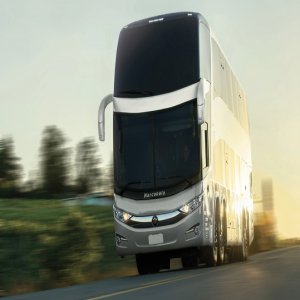Luxury Brands Undergoing Technological Advancements

STORY INLINE POST
Most of today’s luxury cars can be described as being either sporty or elegant, but there are some brands that merge these traits to create something completely out of the ordinary. When considering this synergy, some of the first names that spring to mind are Lamborghini and Aston Martin. These two iconic OEMs are completely different; Lamborghini’s exotic reputation exudes a stylish sense of desire, power, and speed, while Aston Martin represents class, craftsmanship, and a deep history, while still providing the driving pleasure that exhilarates any driver. Both of these brands have enjoyed a rich presence in popular culture, expertly driven by superheroes and secret agents, and are persistently occupying the dreams of automotive aficionados.
The market for these two brands is still dawning in Mexico, but Martin Josephi, General Manager of Lamborghini and Aston Martin México, explains that since opening its doors in 2010, Lamborghini has tripled its sales. Aston Martin is expecting to increase its sales even faster, despite only arriving into the country during February 2014. “We obviously cannot compare ourselves to a dealer in Beverly Hills, London, or Munich.” says Josephi. “Even so, we are performing better than some big cities in the world, and we have recently become the best-selling dealer in Latin America for Lamborghini and Aston Martin. We expect Aston Martin sales numbers to grow very strongly during the first couple of years before stabilizing at a 10% growth rate.”
Mexican consumers have access to the complete range of models that both OEMs manufacture. Lamborghini provides the Huracán and the Aventador, while Aston Martin offers the Vantage, the DB9, the Rapide S, and the Vanquish. “The price of an entry level product from Lamborghini is higher than the equivalent from Aston Martin, and Lamborghini and Aston Martin also attract different types of people,” Josephi explains. “For example, Lamborghini clients are usually men who embrace an active lifestyle and have an interest in more dynamic situations. Comparatively, Aston Martin attracts clients with a more classic lifestyle. We have customers who are primarily attracted by the brand, while other clients want to try out different things. In light of this, we arrange activities that cater to both: for Lamborghini we organize track events and showcases, while we focus more on horse riding and concourse type activities for Aston Martin lovers.” Since the launch of Lamborghini’s Aventador in 2012, there has not been one vehicle within the same price segment that can outperform it. Its acceleration and handling capabilities are comparable to vehicles that cost upwards of US$1 million thanks to its 700hp engine and four-wheel drive. Additionally, Lamborghini has made important progress in carbon fiber and aluminum development. The carbon fiber composite and aluminum chassis that Lamborghini manufactures provides a lighter and stiffer structure that enhances performance. Along with fluid suspension technology, Lamborghini has now introduced its Anima system to the Huracán, which consists of accelerometers and gyroscopes that tell the car in which direction it is moving, if it is shifting, or if it is losing control at any given time. When the car loses control in a curve, for example, Anima will automatically give power to the other wheels to enable it to take the curve properly. The suspension can shift between stiff and soft thanks to a fluid suspension technology located inside the dampers that responds to magnetic shocks. This means that the Aventador can be a very soft car on the street and have a stiff suspension on the track or highway. “A glimpse at what Lamborghini has in store can also be seen through the range of prototypes that they have been introducing recently, like the Sesto Elemento, the Urus, the Veneno, or the Egoista,” says Josephi.
Lamborghini is now throwing its hat into the HV ring. In September 2014, Lamborghini introduced its first hybrid concept car, called Asterion. This new model has PHV technology that allows it to travel up to a maximum of 50km using only electrical power, but still houses the same 610hp gasoline engine as the Huracan. The car has one electric and one gas engine in the back, and two electric engines in the front, letting it reach a maximum speed of 125km/h in electric mode, and 320km/h in gasoline mode. “I believe that Lamborghini was taking its time to come up with a worthwhile model, since almost all other brands have already come up with some sort of hybrid,” states Josephi.
Aston Martin, on the other hand, is holding its focus on elegance and quality. Every sigil is fabricated by a jeweler in Birmingham, and, in the case of the Vanquish, eight cowhides are used to make the leather interiors with a million hand stitched threads in every car. The brand also uses a large amount of carbon fiber in its chassis in order to keep weight to a minimum while maximizing performance. Furthermore, Aston Martin has recently developed a partnership with AMG to create an engine for its next generation of vehicles. In two years’ time, it will get all its electronics from Mercedes-Benz, further strengthening the OEM’s technological advances. Aston Martin’s vehicles possess enormous versatility, utilizing powerful engines without compromising the elegance and comfort of the car. The Rapide S, for example, is designed for daily use and has enough room for four passengers, but is still capable of reaching a maximum speed of 330km/h.
It is clear that Lamborghini and Aston Martin are two brands that have pushed the boundaries of luxury and technology and, while they are not leading the charge in terms of electric vehicles, it is certain that they will continue to push the boundaries of design, elegance, performance, and engineering for many years to come.























